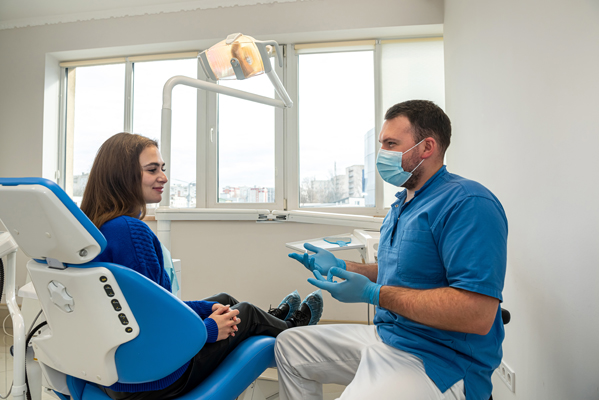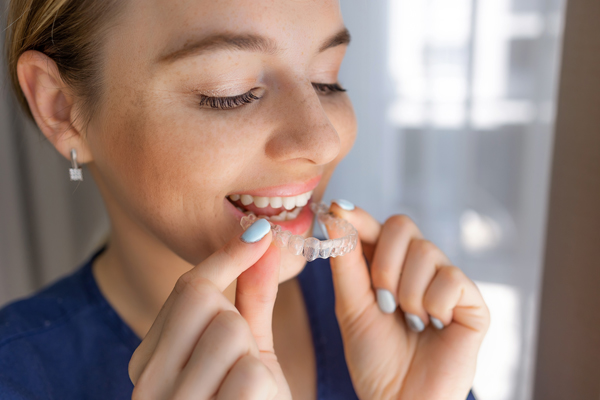Tooth Enamel: Why is It Important to Oral Hygiene?

In recent times, more and more people are catching up with the importance of tooth enamel and its contribution to ensuring excellent oral hygiene.
The tooth enamel is the first and strongest layer of the teeth. It serves as a sturdy shield for the teeth and protects the delicate layers of the teeth and gum against injuries, infections and potential risks. The enamel is the strongest substance in the human body and helps to fight against the invasion of tooth decay and cavities.
The enamel is translucent and covers the dentin directly, which is the next layer that gives the tooth its color.
The crucial roles of tooth enamel
As a vital component of the tooth setup, the enamel contributes immensely to ensuring oral health. The strength of the enamel is required to protect the teeth from breaking, cracking or fracturing. Anytime you bite, brush, chew or eat, you put your teeth at risk of injury. The tooth enamel bears the abuse and prevents the teeth from falling apart.
The enamel contains fluorapatite or hydroxyapatite crystals. The fluoride crystals are highly concentrated and help the enamel withstand plaque, damage, bacteria and acid. These crystals are potent enough to avert tooth decay and cavities.
The enamel has a smooth surface to ensure that food debris do not stick to the teeth, and that helps its self-cleansing abilities. When the enamel becomes rough due to breakage or demineralization, it becomes relatively less hardy against bacteria and plaque.
The enamel is also responsible for protecting the incisors from sensitivity to temperature alterations. The physical properties of the enamel are responsible for the teeth’s glossiness and nature.
What if the enamel gets damaged?
Since the enamel serves as a shield for every other layer in the teeth, damage to the enamel means the teeth will be at risk of bacterial invasion, infections and breakage. Despite its resilience, the enamel is susceptible to cracking and chipping. As there are no living cells in its structure, the cracks cannot heal naturally if the enamel is damaged due to injury or breakage.
How to protect the enamel
Protecting the enamel is as simple as abiding by basic dental hygiene rules. Ideally, you should avoid foods and drinks with high sugar and acid content. Sugary and acidic meals are the main contributors to enamel degradation. The substances stick on the teeth and join the bacteria in the mouth to produce acid that damages the enamel.
You should also brush and floss twice daily, not forgetting to book regular appointments with the dental hygienist or dentist.
Bottom line
Generally, protecting the tooth enamel should be your initial step at preventing oral conditions like a toothache, dental cavities, periodontal diseases, halitosis or gingivitis. It is clear that the enamel is essential for keeping the teeth healthy and sturdy, which means you should take your oral hygiene habits seriously. If you need help, contact the dentist for a checkup or evaluation.
Request an appointment here: http://drcaffeyearle.com or call Smiles By Design at (972) 528-5536 for an appointment in our Flower Mound office.
Check out what others are saying about our services on Yelp: Read our Yelp reviews.
Recent Posts
Dental bonding is a simple and effective way to make immediate improvements to the smile by covering stains or fixing small chips, cracks, and gaps in the teeth, providing immediate improvement. The process is painless and quick and does not require major changes to the natural teeth. Those looking for an easy and affordable way…
Invisalign® is a fast way to straighten teeth, using clear, removable trays. However, smoking can negatively impact patient comfort and aligner appearance throughout treatment. It can even prolong treatment times. Learning more about how smoking can affect Invisalign treatment can help motivate patients to limit or quit tobacco altogether.Smoking tobacco can reduce the efficacy and…
A preventive dentist promotes long-term oral wellness by focusing on early detection, regular checkups, and proactive measures to protect teeth and gums from disease. By prioritizing prevention, you can avoid many dental issues before they even begin. Explore some of the most frequently asked questions about preventive dentistry, gain valuable insight that can help you…
Dental fillings restore teeth affected by decay, preventing further deterioration and maintaining oral health. However, fillings are not indestructible; they can become damaged due to wear and tear, chewing on hard objects, or trauma. A damaged filling can lead to discomfort, increased sensitivity, and even further tooth decay if left unaddressed. Knowing what to do…


